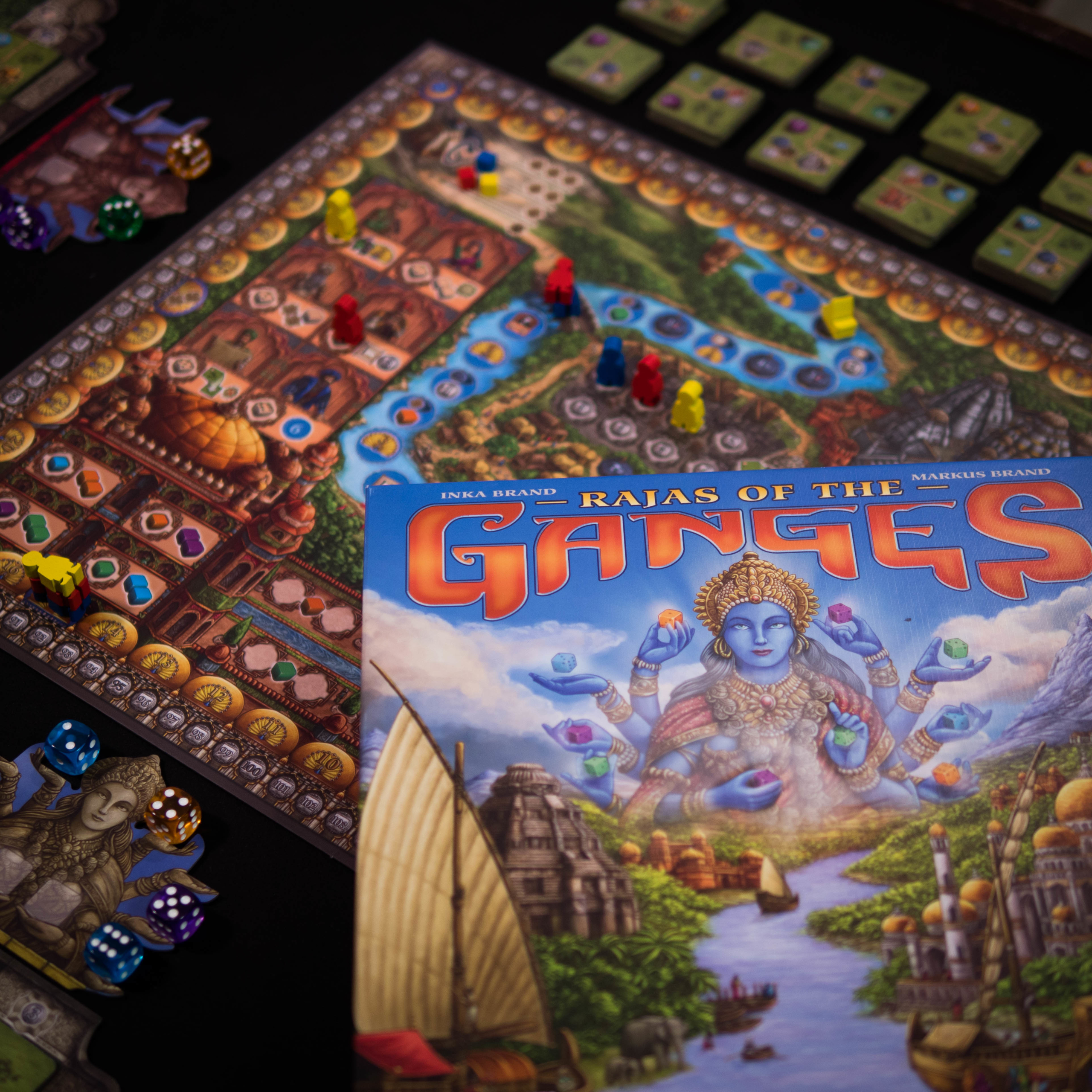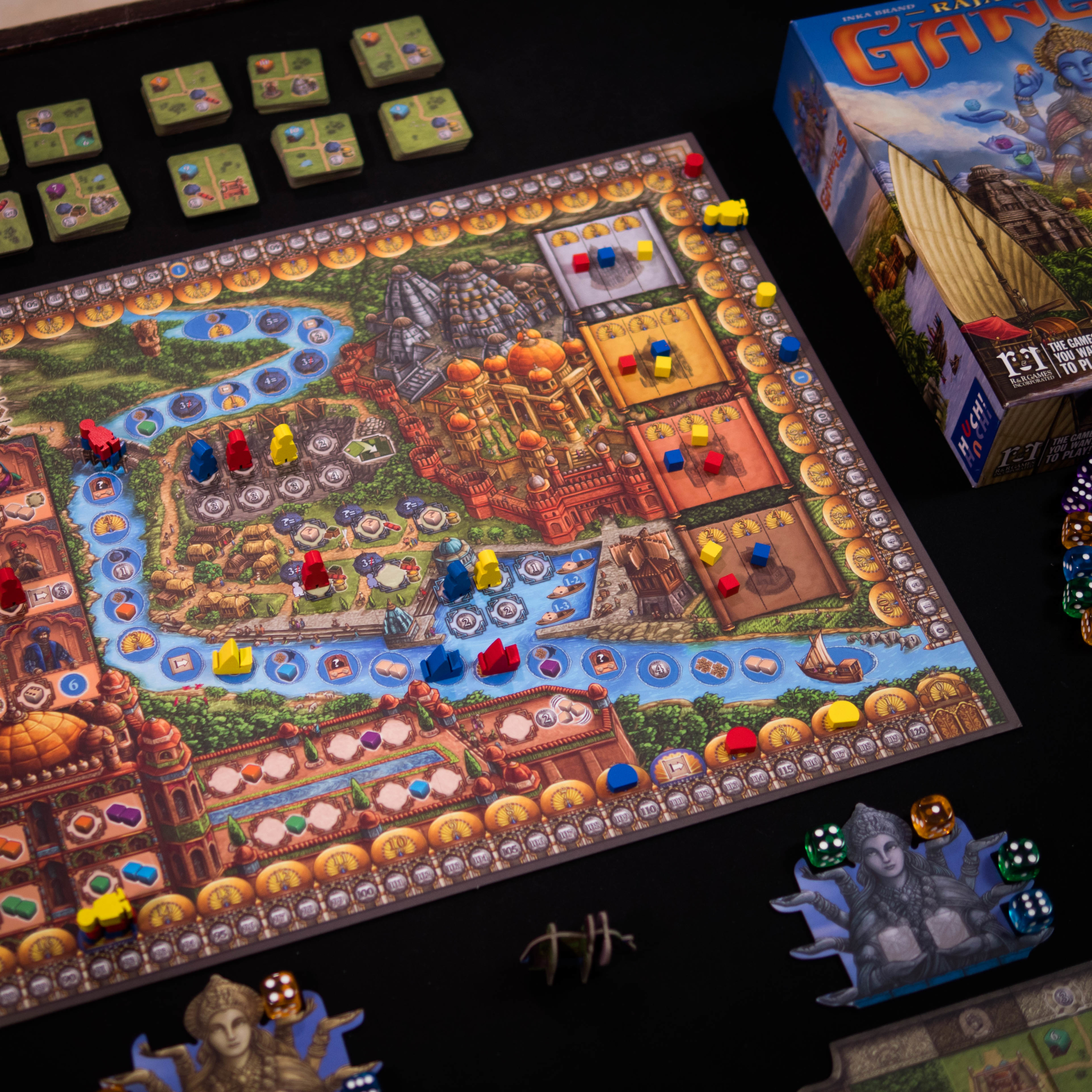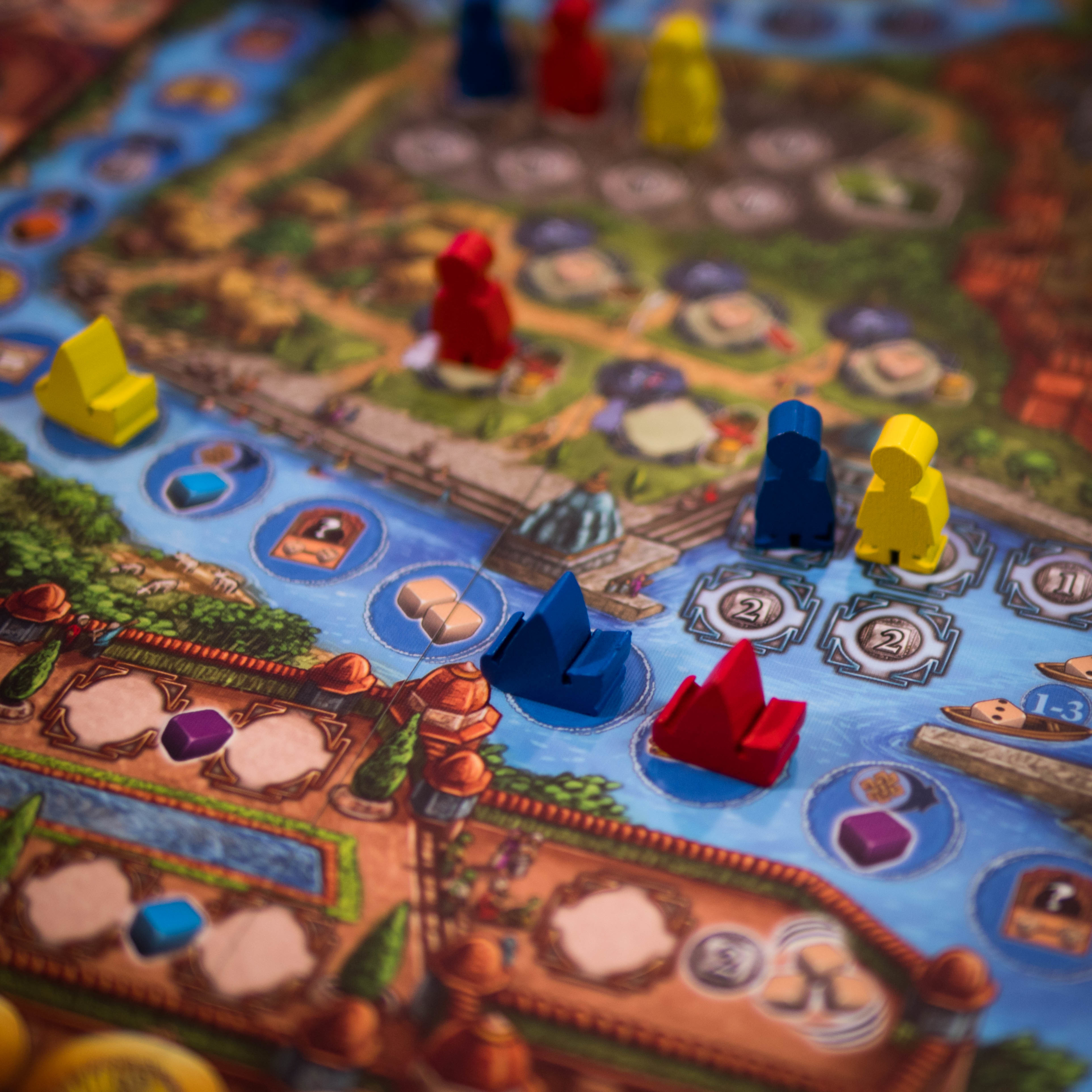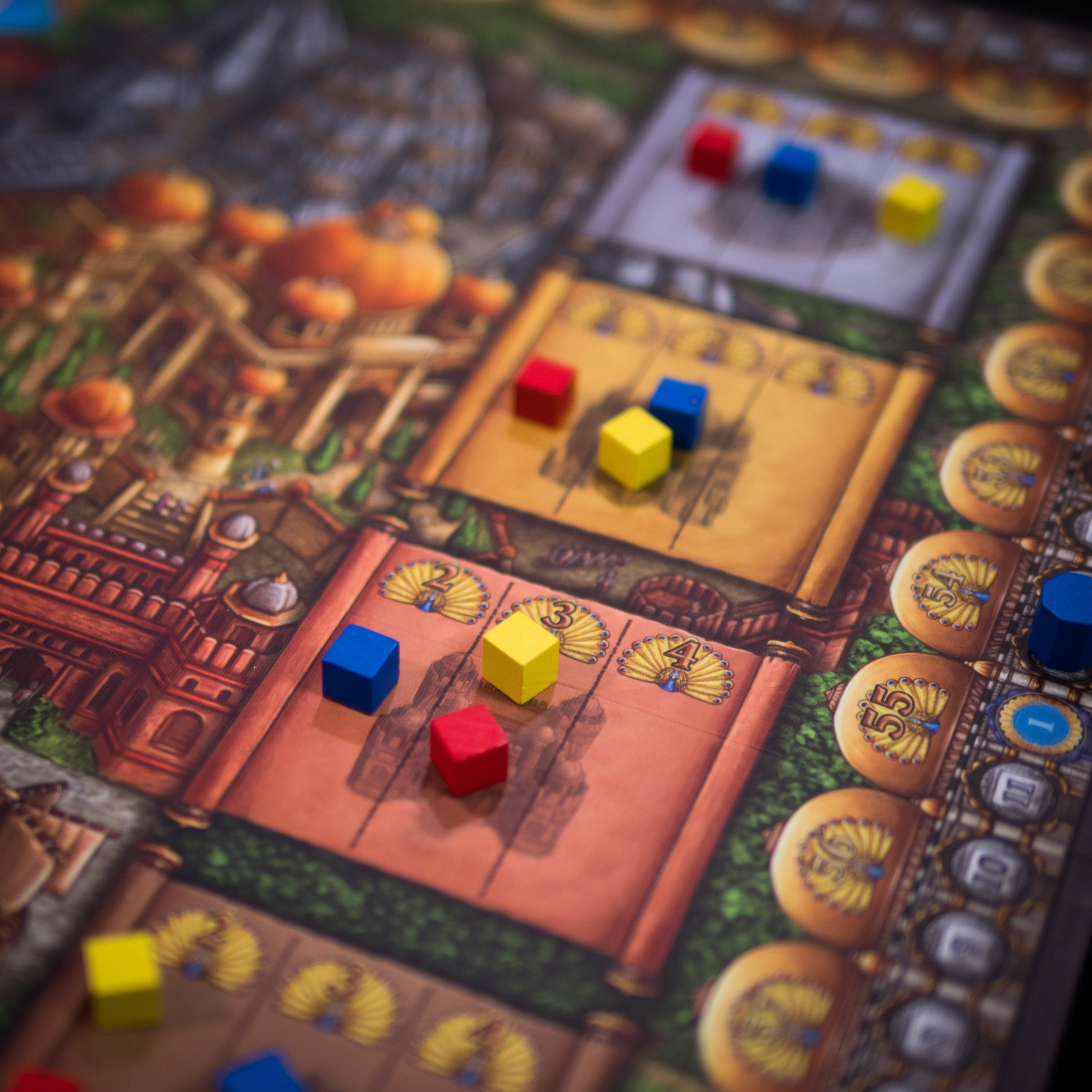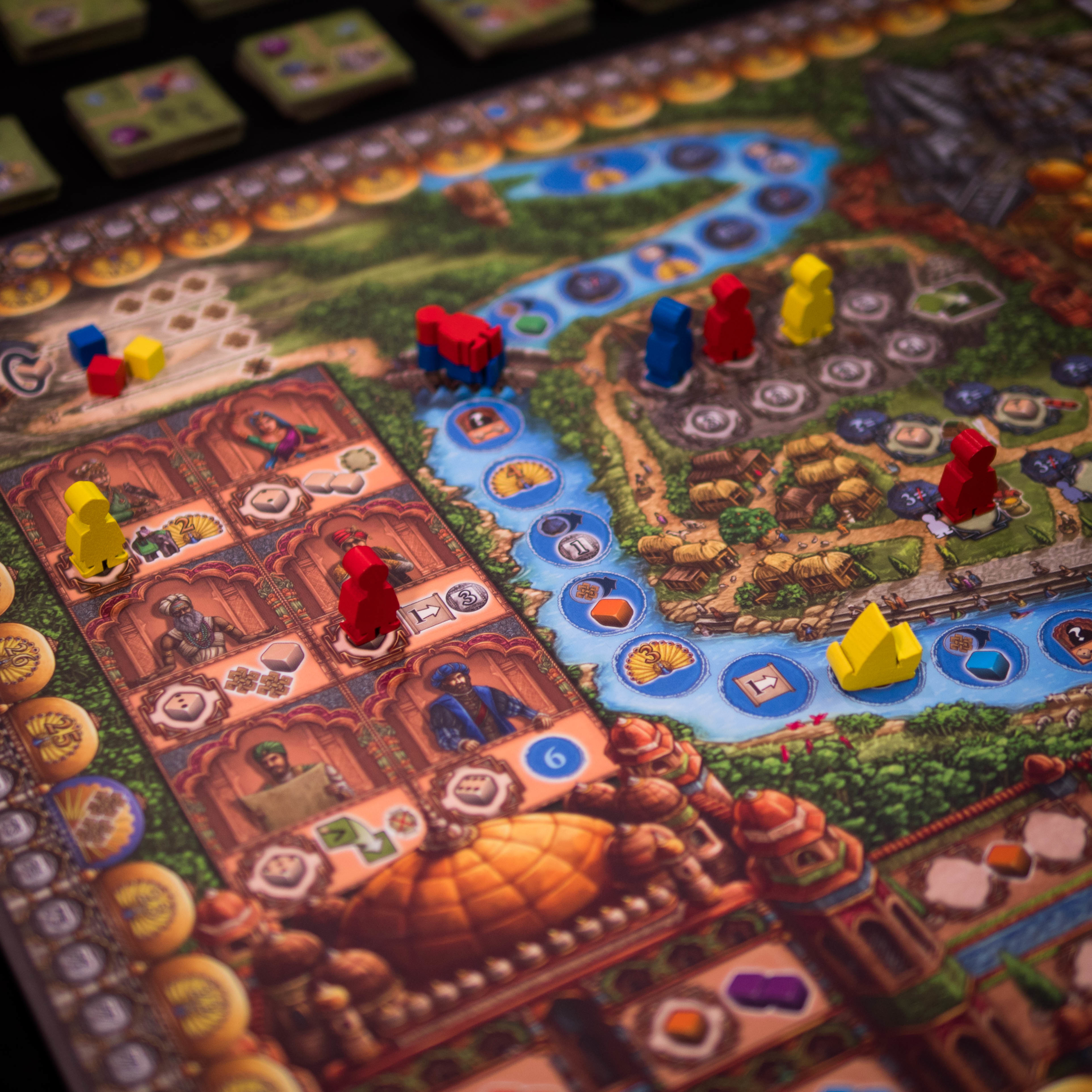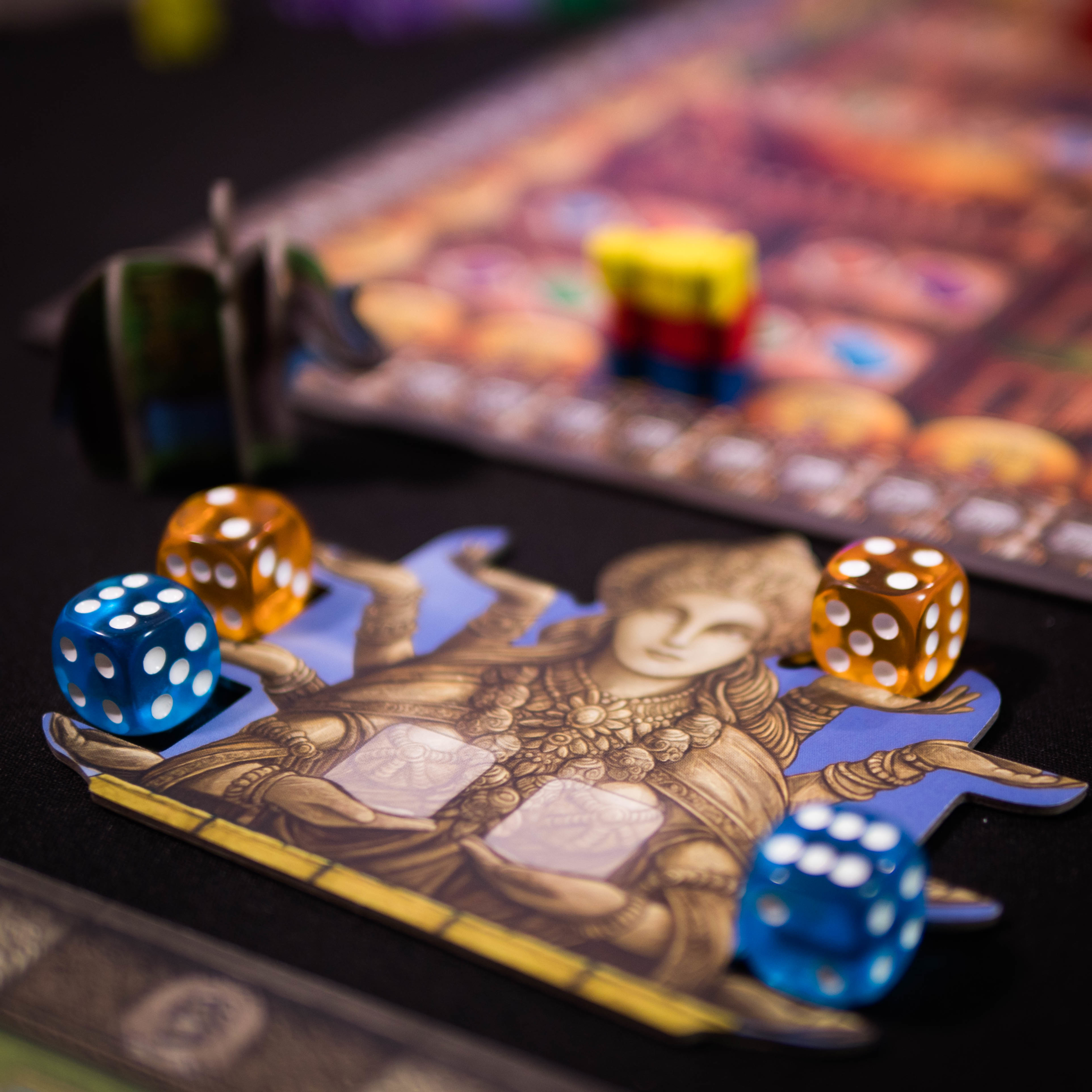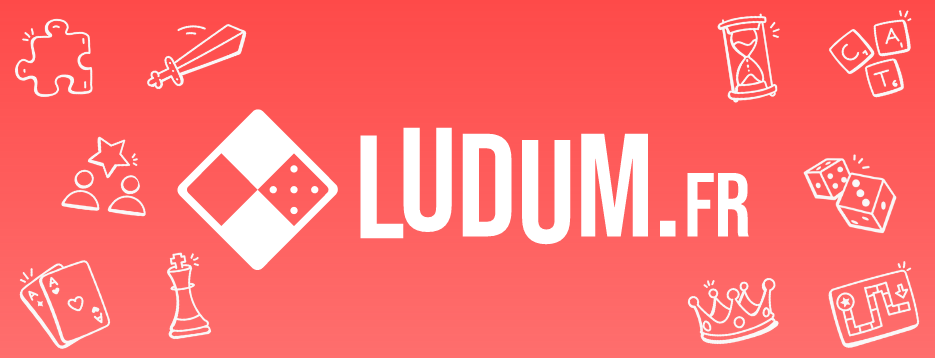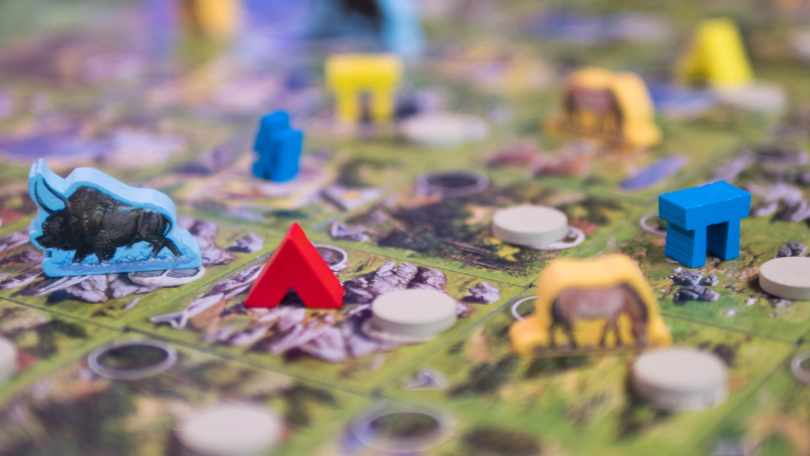During each round, you’ll take turns to strategically place your workers and perform various actions, having two key resources: money and colored dice. When you get a die, you must roll it and position it on your Kali statue.
The different areas of the board offer distinct opportunities:
🔸 The career: This area allows you to undertake construction actions, acquire tiles that you will place in your province to unlock various bonuses. These tiles can feature buildings, generating glory depending on your influence, or various types of markets.
🔸 The market area: It offers the opportunity to earn money by adding value to the market tiles you have placed in your province.
🔸 The Grand Mughal’s Palace: This area offers various benefits, such as first player status, dice recovery, river progression, increased karma, etc.
🔸 The port: Use this area to move your boat towards lucrative spaces, allowing you to acquire new dice, earn money, perform market or palace actions, obtain new workers, etc.
The lower area allows you to collect new colored dice. In addition, the Karma track offers you the possibility of turning a die over to its opposite side.
What makes Rajas of the Ganges unique, a feature taken up by other games (hello Ark Nova), is the triggering of the end of the game when a player manages to cross their score marker with that of the money.


